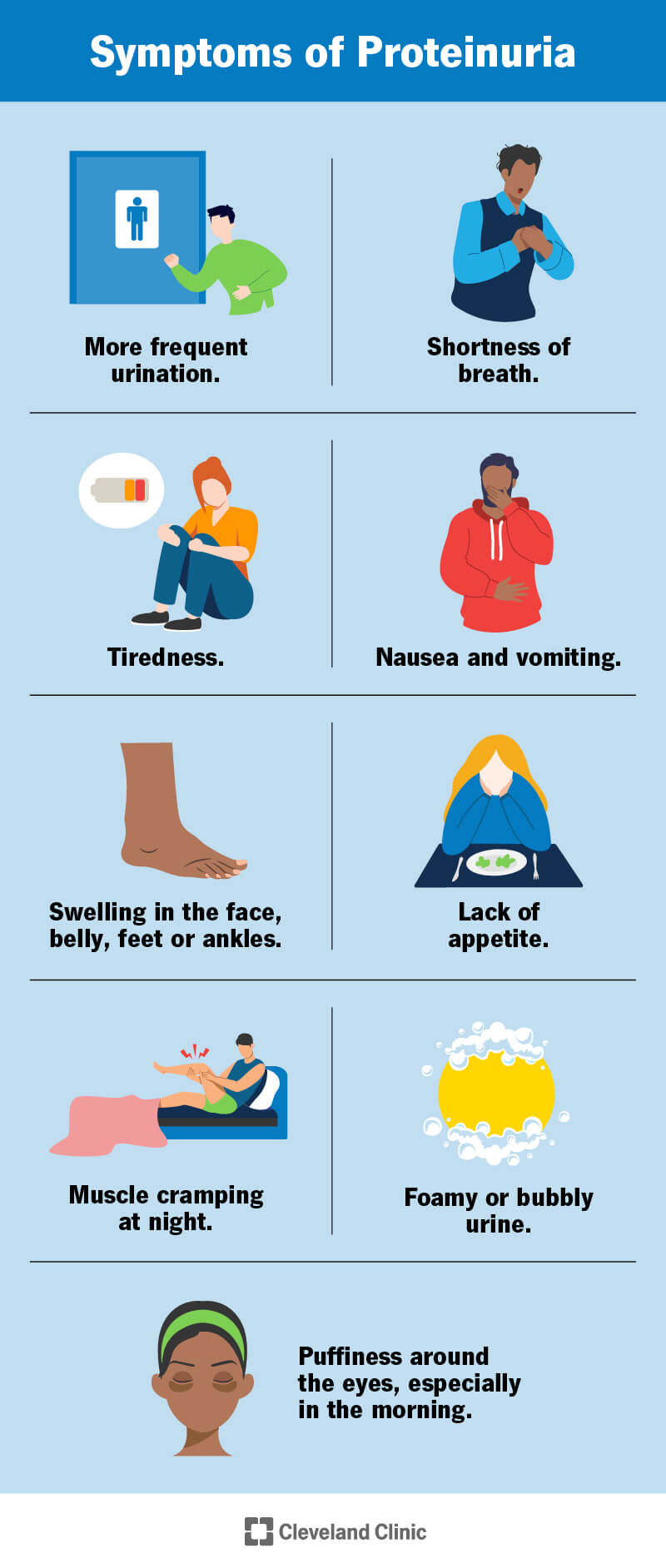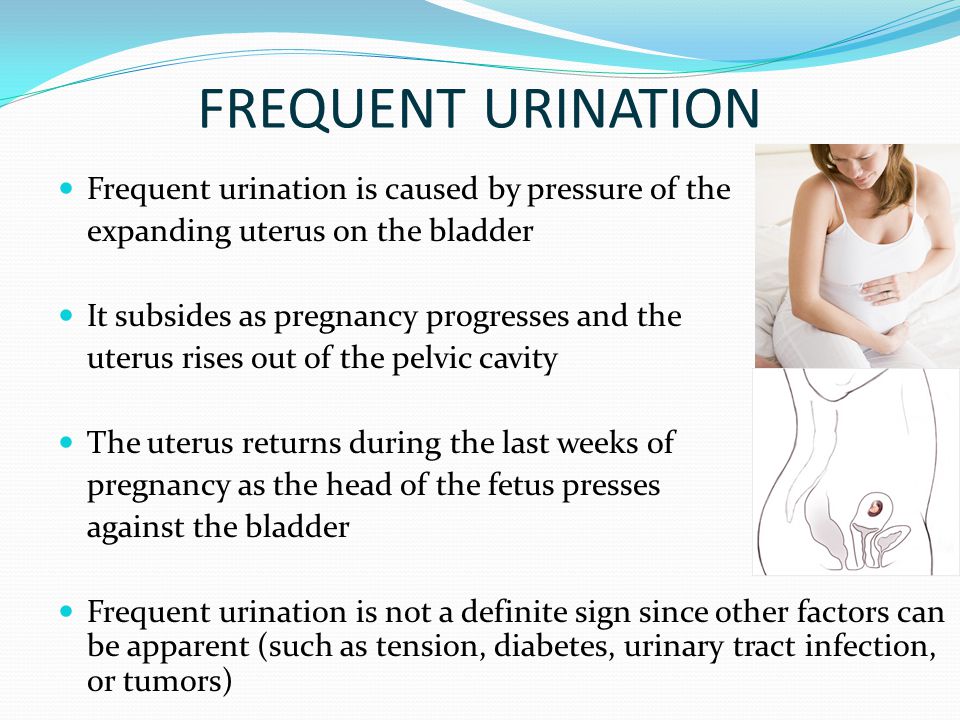
DIAGNOSIS OF PREGNANCY. MATERNAL ADAPTATION TO PREGNANCY. - ppt
DEFINITIONS Gravida = a pregnant woman. This refers to any pregnancy regardless of duration Para = a woman who has delivered a viable young (not necessarily living at birth). Para is used with numerals to designate the number of pregnancies that have resulted in the birth of a viable offspring Nulligravida = a woman who has never been pregnant Nullipara = a woman who has not delivered a child who reached viability Primigravida = a woman pregnant for the first time Primipara = a woman who has delivered one child after the age of viability
DIAGNOSIS OF PREGNANCY. MATERNAL ADAPTATION TO PREGNANCY.
LABORATORY TESTS IN PREGNANCY. Prof. Vlad TICA, MD, PhD.
Para = a woman who has delivered a viable young (not necessarily living at birth). Para is used with numerals to designate the number of pregnancies that have resulted in the birth of a viable offspring. Nulligravida = a woman who has never been pregnant. Nullipara = a woman who has not delivered a child who reached viability. Primigravida = a woman pregnant for the first time. Primipara = a woman who has delivered one child after the age of viability.
Multipara = a woman who has delivered 2/more fetuses past the age of viability. It doesn’t matter whether they are born dead or alive. Grandmultipara = a woman who has had six or more births past the age of viability. Viability = refers to the capability of a fetus to survive outside the uterus after the earliest gestational age (approximately 24 weeks gestation) In utero = refers to within the uterus.
is based on 3 groups of signs and symptoms: Presumtive. Examination. Investigations / lab tests.
Presumptive signs and symptoms of pregnancy are those signs and symptoms that are usually noted by the patient. These signs and symptoms are not proof of pregnancy, but will suspicious of pregnancy.
Amenorrhea. Nausea. Vomiting. Frequent urination.
The majority of patients have no periodic bleeding after the onset of pregnancy. 20 % of women - slight, painless spotting during early gestation for no apparent reason. a large majority of these continue to term and have normal infants.
Stress (severe emotional shock, tension, fear, or a strong desire for a pregnancy) Chronic illness (tuberculosis, endocrine disorders, or central nervous system abnormality) Anemia. Excessive exercises.
Occurs in early morning during the first weeks of pregnancy. Usually spontaneous and subsides in 6 to 8 weeks or by the 12th to 16th weeks of pregnancy. Hyperemesis gravidarum. This is referred to as nausea and vomiting that is severe and lasts beyond the 4th month of pregnancy. It causes weight loss and upsets fluid and electrolyte balance of the patient.
NAUSEA AND VOMITING (MORNING SICKNESS)
Gastrointestinal disorders (hiatal hernias, ulcers, and appendicitis) Infection (influenza, encephalitis) Emotional stress, upset (anxiety, anorexia nervosa) Indigestion.
expanding uterus on the bladder. It subsides as pregnancy progresses and the. uterus rises out of the pelvic cavity. The uterus returns during the last weeks of. pregnancy as the head of the fetus presses. against the bladder. Frequent urination is not a definite sign since other factors can be apparent (such as tension, diabetes, urinary tract infection, or tumors)
Darkening of the areola - the brown part around the nipple. Enlargement of Montgomery glands - the tiny nodules or sebaceous glands within the areola. Increased firmness or tenderness of the breasts. More prominent and visible veins due to the increased blood supply. Presence of colostrum (thin yellowish fluid that is the precursor of breast milk). This can be expressed during the 2nd trimester and may even leak out in the latter part of the pregnancy.
The vaginal walls have taken on a deeper color caused by the increased vascularity because of increased hormones. 6th week. It may also be noted with a rapidly growing uterine tumor or any cause of pelvic congestion. Leukorrhea. An increase in the white / slightly gray. mucoid discharge that has a faint musty odor. Due to hyperplasia of vaginal epithelial cells of the cervix because of increased hormone level from the pregnancy. Is also present in vaginal infections.
The 1st perception of fetal movement within the uterus. It usually occurs toward the end of the 5th month because of spasmodic flutter. A multigravida can feel quickening as. early as 16 weeks. A primigravida usually cannot feel. quickening until after 20 weeks. Fetal movement early in pregnancy. is frequently thought to be gas.
On the abdomen and/or buttocks caused. by ↑ production / sensitivity to adrenocortical. hormones during pregnancy. These marks may be seen on a patient with. Cushing s disease / patient with sudden weight gain. Chloasma. The mask of pregnancy It is a bronze type of facial coloration seen more. on dark-haired women. It is seen after the 16th week of pregnancy. Fingernails. Marked thinning and softening by the 6th week.
A black line in the midline of the abdomen that may run from the sternum / umbilicus to the symphysis pubis. Primigravida - 3rd month; keeps pace with the rising height of the fundus. Multigravida - before the 3rd month.
Fatigue. Common complaint by most patients. during the 1st trimester. May be associated with sleepiness. May also be a result of : anemia. infection. emotional stress. malignant disease. Irascibility. Emotiveness.
Those signs commonly noted by the physician upon examination of the patient. These signs include: uterine changes. abdominal changes. cervical changes. basal body temperature. positive pregnancy test by physician. fetal palpation.
36th week - the xiphoid process. These guidelines are fairly accurate only as long as pregnancy is normal and there are no twins, tumors, or excessive amniotic fluid. Size. Increases in width and length. approximately 5x its normal size. Its weight increases from. 50 grams to 1,000 grams.
This is softening of the lower uterine segment just above the cervix. When the uterine is compressed. between examining fingers, the. wall feels tissue paper thin. The physician will use bimanual. maneuver simultaneously (abdominal. and vaginal) and will cause the uterus. to tilt forward. The Hegar s sign is noted by the 6th to 8th week of pregnancy.
The lower uterine segment or the cervix is tapped by the examiner s finger and left there, the fetus floats upward, then sinks back and a gentle tap is felt on the finger. This is not considered. diagnostic because it can. be elicited in the presence. of ascites or ovarian cysts.
Abdominal enlargement alone is not a sign of pregnancy. Enlargement may be due to uterine or ovarian tumors, or edema. Striae gravidarum may also be classified as a probable sign of pregnancy by the physician.
The cervix is normally firm like the cartilage at the end of the nose. Softening of the cervix (firm like lips) Is present at 6 weeks of pregnancy. Formation of a mucous plug. This is due to hyperplasia of the cervical glands as a result of increased hormones. It serves to seal the cervix of the pregnant uterus and to protect it from contamination by bacteria in the vagina. The mucous is expelled at the end of pregnancy near or at the onset of labor.
Painless uterine contractions occurring throughout pregnancy. It usually begins about the 12th week of pregnancy and becomes progressively stronger. These contractions will, generally, cease with walking / other forms of exercises. Are distinct from contractions of true labor → do NOT cause the cervix to dilate and can usually be stopped by walking.
This is a good indication if the patient has been recording for several cycles previously. A persistent temperature elevation spanning over 3 weeks since ovulation is noted. Basal body temperature (BBT) is 97 % accurate.
This may be misread by doing it too early / too late. Even if the test is positive, it could be the result of ectopic pregnancy / hydatidiform mole (an abnormal growth of a fertilized ovum)
The physician can palpate the abdomen and identify fetal parts. It is not always accurate, a mass in the abdomen may be palpated and mistakenly identified as an infant.
Positive signs of pregnancy are those signs that are definitely confirmed as a pregnancy. They include: Fetal heart sounds. Ultrasound scanning of the fetus. Perception of fetal movements by the clinician. X-ray.
It is audible with a Doppler by 10 weeks of pregnancy and with a fetoscope after the 16th week. It is not to be confused with uterine souffle / swishlike tone from pulsating uterine arteries. The normal fetal heart rate is beats.
The gestation sac can be seen and photographed. An embryo as early as the 4th week after conception can be identified. The fetal parts begin to appear by the 10th week of gestation.
This is done by a trained examiner. It is easily elicited after 24 weeks of pregnancy.
In utero, the fetus receives total body. radiation that may lead to. genetic / gonadal alterations. An x-ray is NOT a recommended test. for identifying pregnancy.
Blood volume ↑ gradually by 30 to 50 % (1500 ml to 3 units) This results in ↓ concentration of red blood cells and hemoglobin. This explains why the need for iron is so important during pregnancy. By the time pregnancy reaches term, the body has usually compensated for the decrease resulting in an essentially normal blood count.
Blood count is interpreted as anemia by the physician if the hemoglobin falls < 10.5 grams / 100 ml and the hematocrit drops < 30 % Increased blood volume compensates for hypertrophied vascular system of enlarged uterus. It improves the placental performance. Blood lost during delivery < 500 ml is normal.
This is NOT a problem for patients with a normal heart. Patients with a diseased heart → risk for cardiac decompensation 28 to 35 weeks of pregnancy (the blood volume and cardiac load are at their peak) also, during labor and immediately after delivery when rapid hemodynamic changes occur. Change in output is reflected in the heart rate. It usually ↑ by 10 beats / minute.
BLOOD PRESSURE Normally, the patient s blood pressure will not rise
The lower extremities are often hampered in the last months of pregnancy due to the expanding uterus restricting physical movement and interfering with the return of blood flow → swelling of the feet and legs.
a. The respiratory rate rises to 18 to 20 to compensate for increased maternal oxygen consumption, which is needed for demands of the uterus, the placenta, and the fetus. b. Women may feel out of breath and may need to sit a moment to catch their breath.
The respiratory rate ↑ to 18 to 20 to compensate for ↑ maternal oxygen consumption (needed for demands of the uterus, the placenta, and the fetus) Women may feel out of breath and may need to sit a moment to catch their breath.
A slight ↑ in body temperature in early pregnancy. The temperature returns to normal at about the 16th week. The patient may feel warmer or experience hot flashes caused by increased hormonal level and basal metabolic rate.
The kidneys must work extra hard excreting the mother s own waste products plus those of the fetus. There is an ↑ in urinary output and a decrease in the specific gravity. The patient may develop urine stasis and pyelonephritis in the right kidney. This is due to pressure on the right ureter resulting from displacement of the uterus slightly to the right by the sigmoid colon.
pelvic cavity in early pregnancy, pressure on the bladder decreases. and frequency diminishes. When lightening occurs during. the final weeks of pregnancy, pressure on the bladder returns. to cause frequency.
There is a realignment of the spinal curvatures during pregnancy to maintain balance. It is due to the ↑ in size of the uterus and. pressure on the abdominal wall. The patient walks with head and shoulders. thrust backward and chest protruding. outward to compensate. This gives the patient a waddling gait. There is a slight relaxation and increased mobility of the pelvic joints, which allows stretching at the time of delivery of the infant.
The uterus enlarges and rises up into the. pelvic cavity. This action displaces the stomach, intestines, and other adjacent organs. Peristalsis is slowed because of the production of the hormone progesterone, which decreases tone and mobility of smooth muscles. This slowing enhances the absorption of nutrients and slows the rate of secretion of hydrochloric acid and pepsin.
Flare-up of peptic ulcers is uncommon in pregnancy. Slow emptying may ↑ nausea and heartburn (pyrosis) Relaxation of the cardiac sphincter may ↑ regurgitation and chance for heartburn. Movement through the large. intestines is also slowed due. to an ↑ in water consumption. from this area → ↑ the chance for constipation.
Parathyroid Gland. ↑ in size slightly. It meets the ↑ requirements for calcium needed for fetal growth. Posterior Pituitary. Near the end of term, the posterior pituitary will begin to secrete oxytocin that was produced in the hypothalamus and stored there. It will serve to initiate labor.
Anterior Pituitary. At birth, It will begin to secrete prolactin. This stimulates the production of breast milk. Placenta. Acts as a temporary endocrine gland. during pregnancy. It produces large amounts of estrogen and. progesterone by 10 to 12 weeks of pregnancy. It serves to maintain the growth of the uterus, helps to control uterine activity, and is responsible for many of the maternal changes in the body.
There is a slight loss of pounds during. early pregnancy if the patient. experiences much nausea and vomiting. Weight gain of 1 to 2 kg by the end of. the 1st trimester. A gain of a 400 mg per wk is expected during the 2nd and 3rd trimesters. Monitoring of weight gain should be done in conjunction with close monitoring of BP.
Twin pregnancy: will require a higher caloric diet and expect a higher weight gain than a single pregnancy. Adequate protein intake emphasized to the patient for development of the healthy fetus and proper diet reviewed at each prenatal visit. Normal weight gain is about kg during pregnancy.
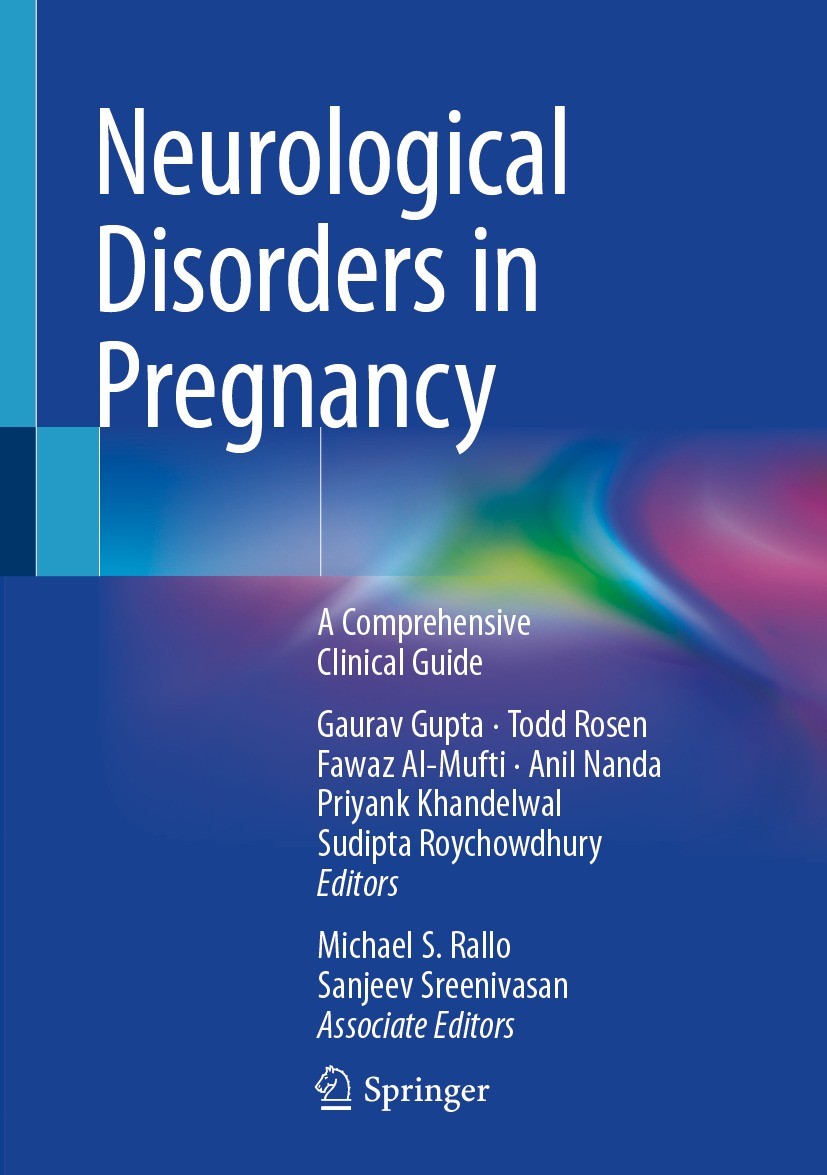
Cardiovascular and Cerebrovascular Changes During Pregnancy
MedEd On The Go - Short-Form Comprehensive Medical Education

Maternal Physiology in Pregnancy
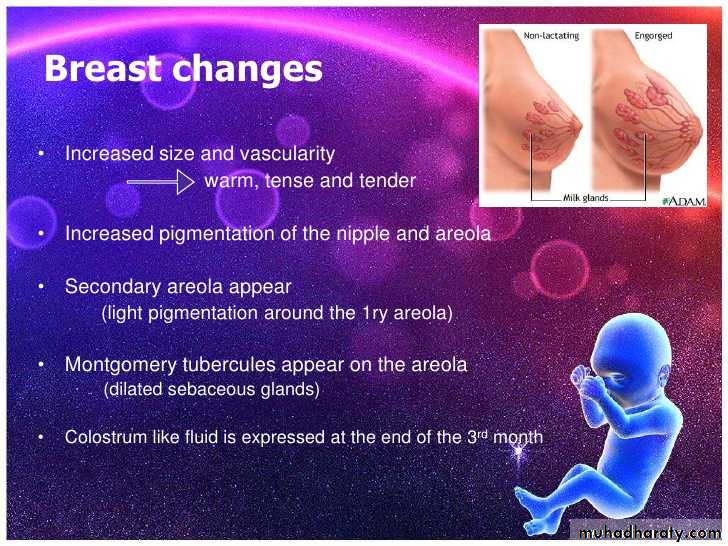
Physiological changes in pregnancy ppt - د. اشراق - Muhadharaty

DIAGNOSIS OF PREGNANCY. MATERNAL ADAPTATION TO PREGNANCY. - ppt video online download
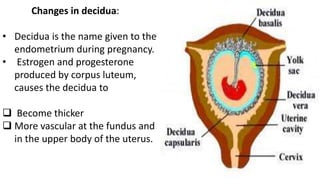
Maternal adaptation in pregnancy
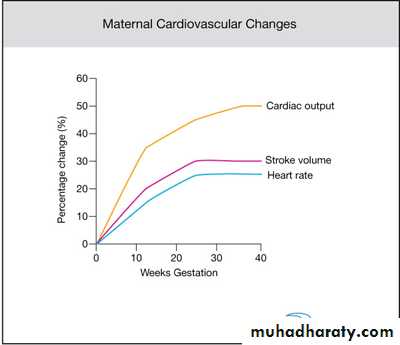
Physiological changes in pregnancy ppt - د. اشراق - Muhadharaty

VIDEO] Laparoscopic Abdominal Cerclage in Pregnancy

Bioenergetics: the evolutionary basis of progressive kidney

Maternal Adaptation during Pregnancy - ppt download

PPT - Chapter 4 diagnosis of pregnancy PowerPoint Presentation, free download - ID:3695661

SOLUTION: Urinary problem in antenatal and postnatal period.ppt - Studypool

SOLUTION: Pregnancy induced hypertension (PIH) - Studypool

Creatine and pregnancy outcomes: a prospective cohort study of creatine metabolism in low-risk pregnant females - The American Journal of Clinical Nutrition
